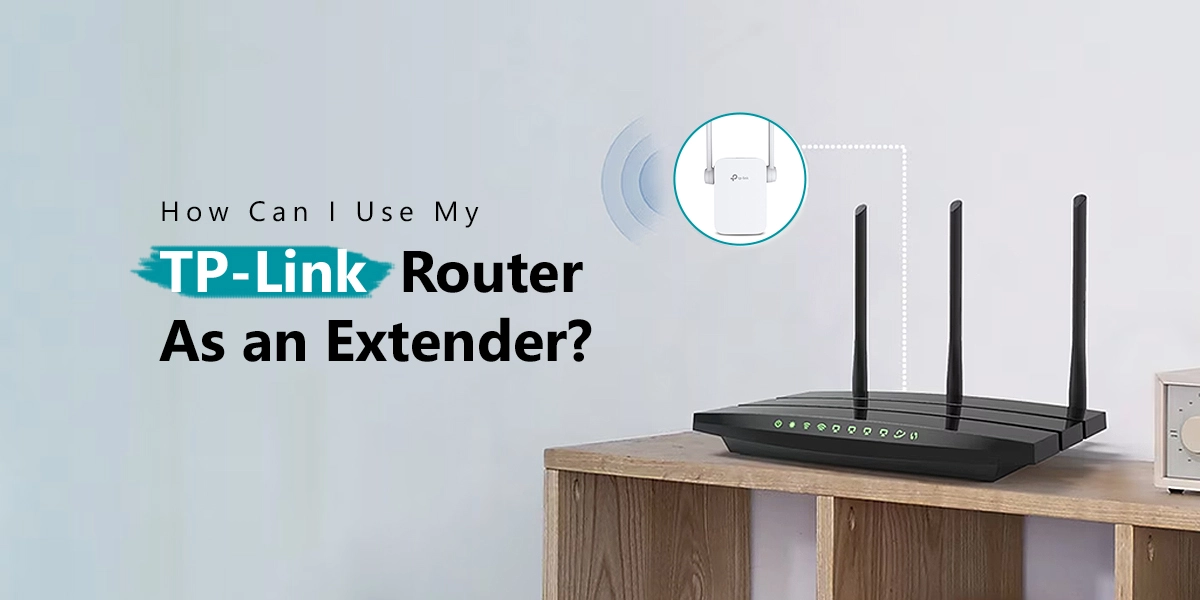
How Can I Use My TP-Link Router as an Extender?
In the hyperconnected world of today, having a durable and dependable Wi-Fi connection is decisive. But a lot of us have trouble with weak areas and dead zones in our houses or workplaces where the Wi-Fi signal simply won’t go. Thankfully, you can increase the range of your network and get rid of those annoying dead zones. If you have the correct equipment and know-how. Your TP-Link router is one such device that can be used to increase the coverage of your network by acting as a Wi-Fi extender. Go through the progression of turning your TP-Link router into an extender. In this guide so you can have dependable internet access across your room.
Comprehending Wi-Fi Extenders
It’s critical to comprehend the purpose and operation of a Wi-Fi extender.Before beginning the tp link range extender setup procedure. A Wi-Fi extender, occasionally referred to as a repeater, is a gadget that increases the strength of the signal. It is already coming from your router and rebroadcasts it over a larger area. It works by essentially extending the Wi-Fi signal from your primary router to places where it is weak or nonexistent.
Why Use the Extender Function of Your TP-Link Router?
You may be wondering why you should bother buying a special Wi-Fi extender. Also instead of using your TP-Link router as Tp-link extender. Well, there are a few of them:
- Cost-effectiveness: By using your current TP-Link router as a tp link extender setup. You can avoid spend extra money on new hardware purchases.
- Personalization: You may better customize the extend network to meet your needs. By utilizing the settings and configurations that you have more control over with your TP-Link router.
- Compatibility: Since your primary network and your router are of the same brand, compatibility problems are unlikely to occur.
Having grasped the advantages, let’s proceed with configuring your TP-Link router as an extender.
Methodical Guide:
- Verify Compatibility: The first thing to do is to make sure your router model is compatible with the repeater mode, as not all TP-Link routers support it. To confirm compatibility, see the TP-Link website or the user manual.
- Reset the Router: To prevent conflicts, it is advisable to return your TP-Link router to its factory configuration if it has been set up earlier. Find your router’s reset button, which is often locate on the back, and push it for ten seconds or so to reset it.
- Connect to the Router: To connect your laptop or computer to a LAN port on the TP-Link router, use an Ethernet cable. As an alternative, you can use the router’s default Wi-Fi network. Which is typically identify by the model number of the router, to establish a wireless connection.
- Get to the Router Configuration: The router’s default IP address, which is usually 192.168.0.1 or 192.168.1.1. It can be entered into the address bar of an open web browser. The router’s username and password, which are often admin/admin by default, must be entered when prompt (if these credentials don’t work, examine your router’s manual).
- Turn on the repeater mode: Go to the Wireless settings or Advanced settings area after logging into the router’s settings interface. Locate and activate the “Repeater” or “Range Extender” option.
- Placement: It’s critical to position the TP-Link router in the best possible area after adjusting the extender parameters. It should be placed so that it is both close enough to the locations. Where you require extended coverage and within range of the main router’s signal.
- Check the Connection: After the TP-Link router has been configure and placed appropriately. You can connect your devices to the expanded network to verify the connection. Make sure you have a strong and consistent Wi-Fi signal in any previously poor spots by taking a walk around your house or place of business. Now that you’ve convert your TP-Link router into a Wi-Fi extender, you can efficiently increase the coverage of your network and get rid of those annoying dead zones.
Advice for Peak Efficiency:
- Firmware Update: To guarantee compatibility and security, make sure the firmware on your TP-Link router is current.
- Choose a different Wi-Fi channel than your primary router to prevent interference.
- Signal Strength: To guarantee optimum functioning, keep an eye on the signal strengths of the main router and the extender.
- Regular Maintenance: To keep the extender operating at its best, check it from time to time and make necessary adjustments to the settings.
Final Thoughts
To sum up, using your TP-Link router as a Wi-Fi extender is an affordable and adaptable way to increase the range of your network. Dead zones and poor signals will no longer limit your ability to connect wirelessly throughout your house or place of business. Simply follow the instructions in this tutorial and put the advice to use.